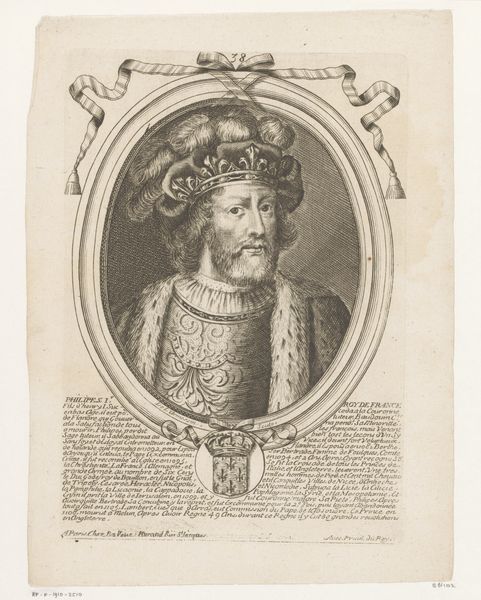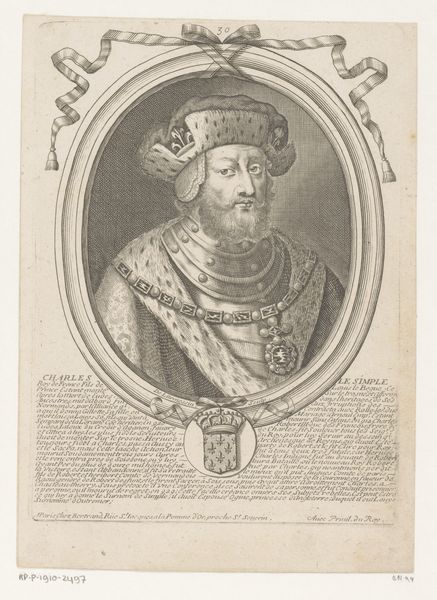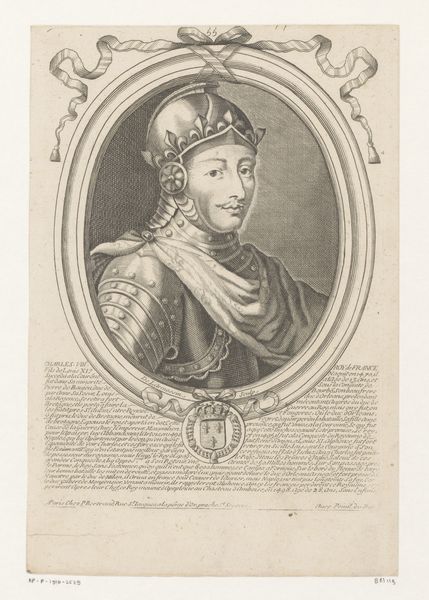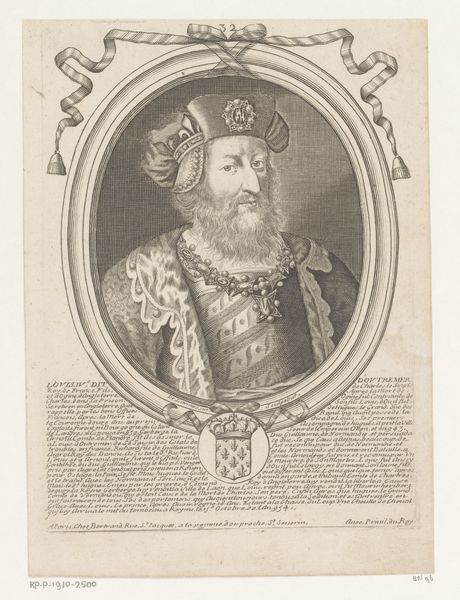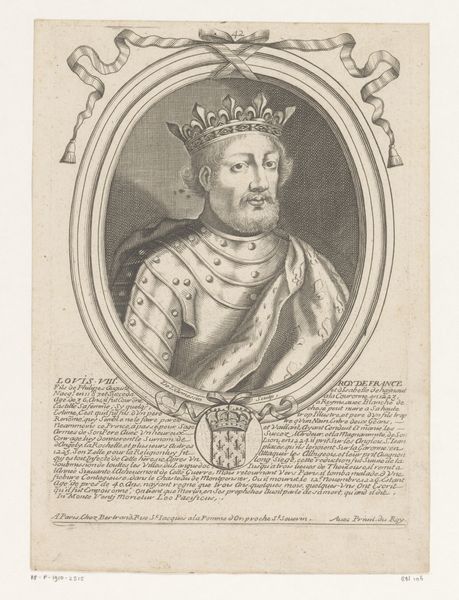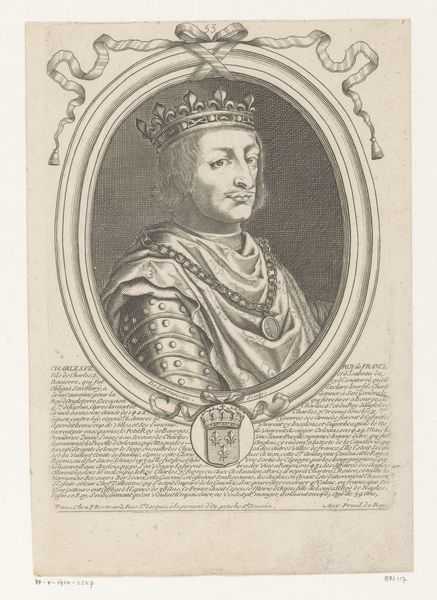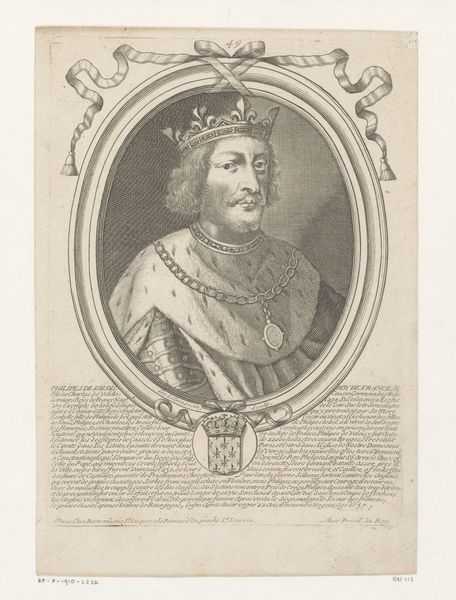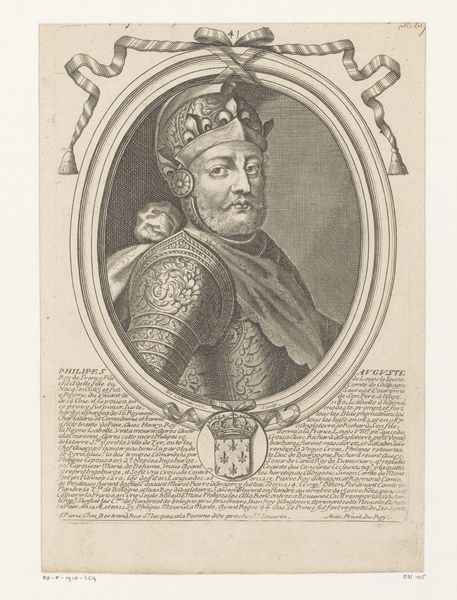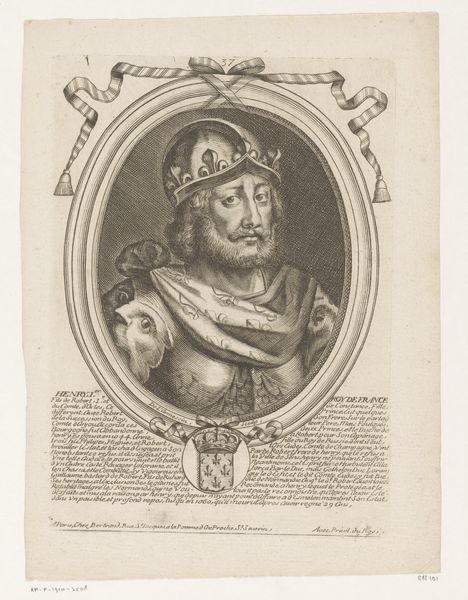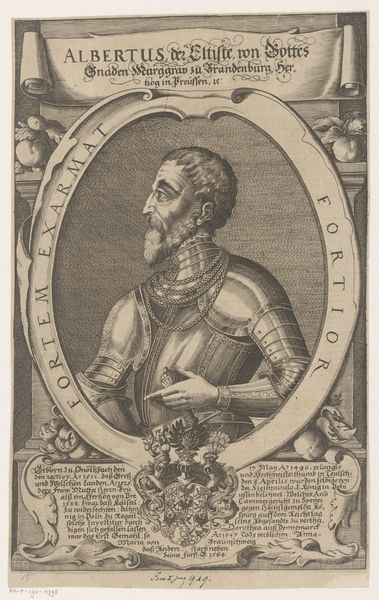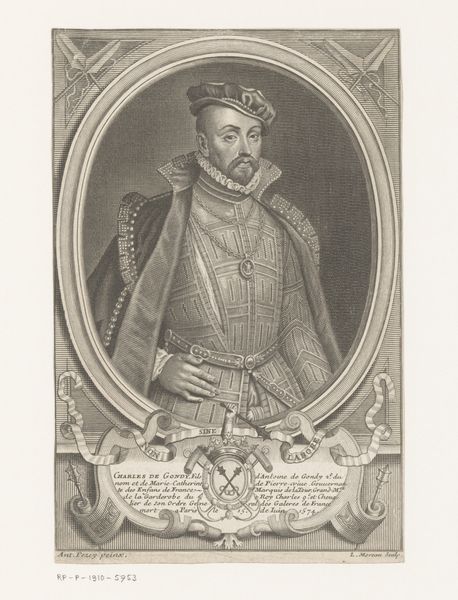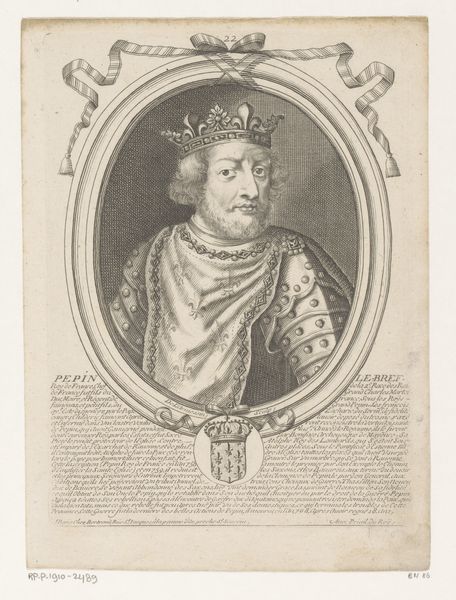
print, engraving
#
portrait
#
baroque
# print
#
old engraving style
#
form
#
line
#
history-painting
#
engraving
#
realism
Dimensions: height 225 mm, width 160 mm
Copyright: Rijks Museum: Open Domain
Editor: So, this is "Portret van Hendrik II, koning van Frankrijk" by Nicolas de Larmessin I, made sometime between 1642 and 1678. It's currently at the Rijksmuseum. It’s an engraving, isn't it? It’s interesting to see this detailed portrait rendered with what looks like very precise lines. How do you see this piece, especially knowing it's a print? Curator: Well, immediately my attention is drawn to the means of production. This isn't some spontaneous painting; it's a meticulously crafted print. Consider the labor involved: the engraver, the printing press, the paper, and its distribution. How does that industrialization impact how we perceive the royal figure depicted? Editor: That’s a perspective I hadn’t considered! It makes me think about the intention behind making it a print. Was it about mass production, to spread the image of the king? Curator: Precisely. The choice of engraving signifies broader distribution. Portraits were often vehicles of power, but turning it into a print transformed the portrait into a commodity. The image becomes available for consumption. Who was the target audience, and how might their social class or political affiliations shaped their reception? Editor: So it’s not just about the king’s image, but how accessible that image was to the people and the social implications of its accessibility? I never really considered art through the lens of consumption like that. Curator: Absolutely. Think about the materials themselves. Where did the copper come from? Who mined it? This piece provides a window into global trade networks and the systems of labor underpinning artistic creation. Even something seemingly high-brow is connected to raw materials and labour. Editor: Wow, okay. I definitely see the portrait in a totally different light now. It's no longer just about aesthetics, it's about a network of processes, labour and consumption. Curator: Exactly! It makes us consider the political economy of image-making. The focus on materiality is key to deconstructing art.
Comments
No comments
Be the first to comment and join the conversation on the ultimate creative platform.

